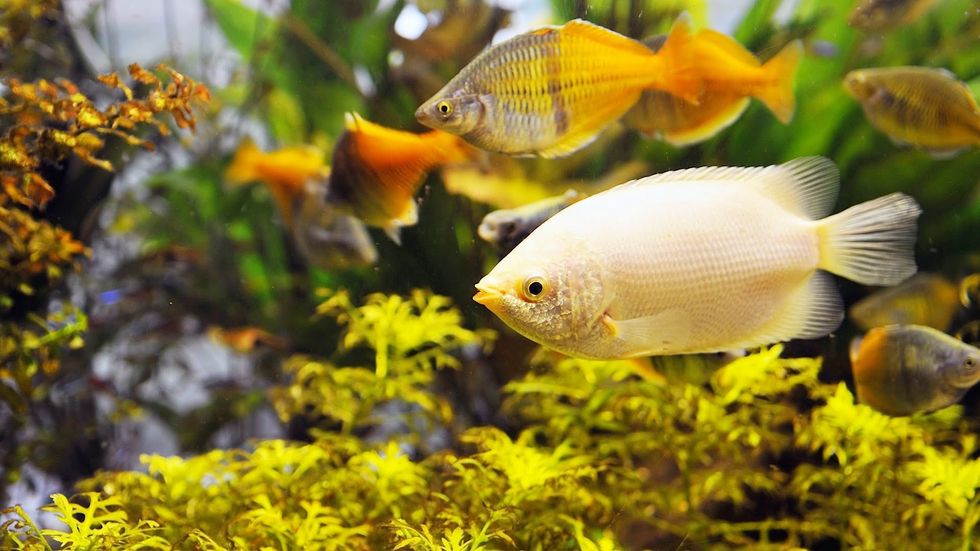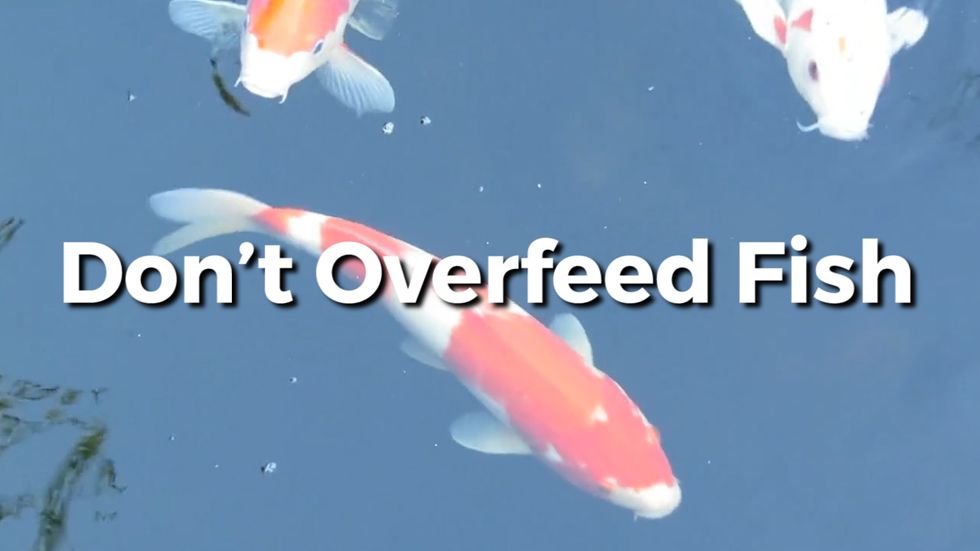Keeping fish is one of the most exciting and rewarding areas everyone can venture in. Keeping a tropical aquarium in the living room or the backyard is not only satisfying but also gives you a fresh supply of fish. Fresh water fish are considered the easiest and most affordable to keep. This is because freshwater fish tanks are readily available and inexpensive. In addition to this, there's a wide array of fresh water fish to keep.
Although many people start keeping fish as a hobby, many get hooked pretty fast, with many going for larger aquariums. The thought of building/creating a small ecosystem of plants and animals is simply fulfilling. While fish keeping is relatively easy, some people struggle to keep their fish healthy and aquariums in top condition. Some of the common challenges that fish keepers face include not knowing the best type of fish to keep, favorable conditions, necessary maintenance, the kind of food fish feed on, and how to keep their fish healthy.
Such challenges make keeping fish frustrating for many first timers. Although there are tons of articles and publications on fish keeping, most of these are contradictory and confusing at the same time. Nonetheless, finding credible and informative pieces to guide you every step of the way makes fish keeping a relatively easy exercise. Outlined below are some essential and handy tips to help you get started as a fish keeper.
1. Cycle The Tank Periodically
Cycling a tank simply means ensuring water in the fish tank is favorable for fish growth. Fresh water fish thrive in mild alkaline water, with the slightest hint of acidity affecting their health and well-being. This is one of the reasons experts recommend setting up the aquarium on one day, then adding fish a few days later. If you already have some fish in the aquarium, consider checking the water condition before adding more fish, to ensure it supports their growth.
Another reason why tank cycling is important is to encourage healthy growth of micro-organisms that help break down waste in the tank. These microbes' break down food materials and fish waste thus keeping the ecosystem in check. It often takes around a week or more before these bacteria are fully developed. You, therefore, should water at least one week before adding fish in the pond/aquarium.
The key to having a 'healthy' aquarium lies with how you start initially. Most aquarium kits come with a packet of these 'microbes/bacteria' that make cycling possible. Fish food should also do the trick especially if you cannot find the recommended cycling elements.
Never attempt to cycle your aquarium with fish already inside. Doing this will only make the water parameters unsafe for fish survival, this can kill all the fish in the tank. Consider transferring your fish to another tank before cycling the main aquarium.
2. Test Your Water Parameters
The aquarium water parameters should be taken seriously if your fish are to survive. You can use a water testing kit to test and monitor water pH, nitrites, nitrates, and ammonia levels in the water. While these chemical compounds are safe at low concentrations, the levels can rise quickly within a matter of time. This is because fish droppings contain concentrated amounts of nitrates, ammonia, and nitrates. Using the kit to test for level changes can help keep these parameters in check.
Should you find chemical compounds way above the recommended levels, use over-the-counter products to neutralize them. Flushing out some of the water and topping it up with fresh water can also lower the chemical levels. Experts recommend changing the water frequently to avoid toxicities within the aquarium. To be on the safe side, flush out 1/3 of the water each week then replace it with fresh water. Doing this should dilute the water making it favorable for the fish to survive.
Debris accumulation at the bottom of the tank on gravel should be contained too. Vacuuming the bottom should take care of these materials easily. All you need are siphons and water changers designed to remove water while cleaning the gravel.
Most fish species will survive and even thrive in varying water pH levels. High pH levels however affect how the fish survive, which is why you should test the water once in a while using the testing kit. If the pH levels are too high, you can use chemicals to bring it down or just dilute the water. Be sure to choose the right fish for your tank. While some fingerlings may seem small, they can grow too big for your tank. This could contribute to high toxicity levels in smaller tanks.
3. Research Before Buying Fish Fingerlings
While many people put much of their time looking for the perfect aquarium, it's equally important that you shop for your fish carefully. Deciding on the type of fish you wish to rear, its size, temperament, social behaviors, and space requirements can save you frustrations in the future. Never purchase fingerlings for their looks, but rather at the way they grow and live with each other- you don't want predators in your aquarium. Take some time to research about the various types of fish, and know which the best one is, for your and needs.
Although fish make a delicious and nutritious meal, don't be tempted to overstock your tank. Only stock the tank with enough fish to allow peaceful cohabitation, and ensure there's sufficient space to enable them to reach maturity. Knowing exactly what type of fish you want to keep, can help you make the right decision. Keeping just enough fish in the tank helps reduce aggression, stress, or sick fish. It would be better to have fewer but healthy fish, than many starved or stressed ones.
4. Do Not Overfeed the Fish
Unlike most species, fish require very little food to survive and grow healthy. This explains why wild fish survive on just insects, larvae, and some plants. You, therefore, shouldn't feed the fish more than they need. One moderate feeding per day is enough. Take into consideration the various types of fish during feeding time. If there are catfish and other scavengers in the tank, then consider including sinking pellets in the meal. This should enable other bottom feeders to have their share.
Fish feed for just a few minutes to their fill. Consider giving them just enough for the day. Giving excess food only makes the tank dirty, causes a chemical spike, and even makes them unhealthy. Choosing random days to feed the fish is another excellent way to avoid overfeeding. Skipping a day or two forces the fish to feed on leftover foods from the previous day, this promotes a cleaner tank. Feeding them enough, yet sparingly also reduced toxicity within the pond. Overfeeding the fish only results in more droppings, translating to higher concentrations of ammonia and nitrates.
Aquafarming can also help keep the aquarium clean most of the times. Introducing plants such as lettuce, spinach, or tubers in the pond helps contain chemical deposits in the water. Plants need these chemicals (ammonia, nitrates, nitrites, etc.) to thrive, while the fish will be feeding on the plant root tips. The symbiotic relationship makes it possible to maintain healthy pH levels without the need to flush.
5. Manage Light
Algae growth is one of the major concerns among many new aquarium owners. Just like other plants, algae need light to thrive. Fish, on the other hand, do not require light to see around. They use other sensory organs to find their way in the tank and to locate food as well. This, therefore, means you do not need light all day every day in the tank.
Managing the amount of light that gets into the tank can help control algae growth significantly. One way to do this is placing the aquarium away from direct sunlight, or any other source of light for that matter. Reducing sunlight exposure makes it almost impossible for algae to grow or flourish.
If possible, keep the tank light on for less than 10hours daily. Since fish do not need light to see, you can as well turn off the lights until when you feel necessary (when you want to see the fish). Moderate daylight lighting is therefore enough for the aquarium. Remember to turn off the light whenever heading out, or whenever no one is in the house.
You, however, should provide maximum light exposure possible if there are live plants involved. This is particularly important for those practicing aquaculture with plants on top. The good thing with having plants in the tank is that they use up much of the nutrients in the water leaving very little or none for algae. Aquariums with plants, therefore, have fewer concentrations of algae as compared to those with none.
If you want further information on this, then this piece on how to mind your goldfish is a good one and well worth reading and even re-reading now and again.




















